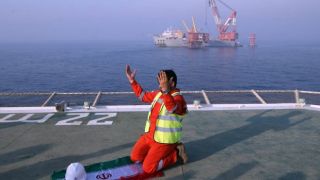As 2016 is coming to an end, Middle East has equivocal feelings. The key countries in the region have seen domestic stability and enough capacity to meet external challenges. No revolutions, regime changes, or other system changes have been observed in the Middle East political landscape. The split in the region into Shia and Sunni “poles of power” did not grow into regional wars. Meantime, the Middle East still has many geopolitical wounds that will hardly let peace come to the region any time soon.
The major problem in the area from the Mediterranean shore of North Africa up to the borders of Afghanistan and Pakistan remains unchangeable: it is fundamental deficit of full-fledged states on the political map of the Greater Middle East, which resulted in the transboundary threat of terrorism. The scourge of the region, Daesh (‘Islamic State,’ IS, ISIS) neither prospered nor was destroyed by combined efforts of the countries. Quite the contrary, at the end of the year, the Jihadist “caliphate” undertook some successful attacks on the Iraqi and Syrian counter-terrorist fronts.
Saudi Arabia’s Proxy War against Iran
The relations between Saudi Arabia and Iran grew tense at the beginning of the year. The authorities of the largest Arab monarchy executed a prominent Shia cleric triggering protests in Tehran and Mashhad where the embassy and consulate were smashed. In response, Saudi Arabia recalled its ambassador from Iran. The two countries have no diplomatic relations now, though there has been a certain thaw in their relationship by the end of the year. In autumn, they reached a political consensus in Lebanon where Michel Aoun, a pro-Iranian statesman, was elected as president, and Saad Hariri, Saudi Arabia’s protégé, was appointed as prime minister. Afterwards, brokered by Russia, Iran and Saudi Arabia managed to agree over the deal between the OPEC and non-OPEC countries - something that seemed unachievable.
The two backbone poles of power in the region – Sunni and Shia – have obviously avoided the dangerous line of direct confrontation. However, the sides are still divided by a wide range of factors of indirect rivalry almost in all “hot spots” in the region. The most evident rivalry was in the domestic conflict in Yemen, where the coalition of Arab countries in the Persian Gulf resumed active hostilities against the Hussite rebels backed by Iran. Tehran and Riyadh have many reasons to continue their frontal geopolitical confrontation – proxy war - in Syria and Iraq too.
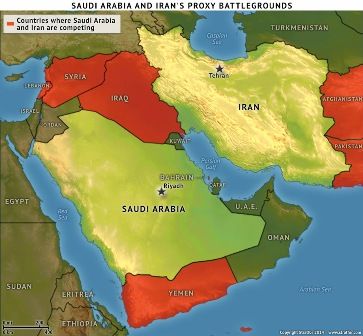
The Kingdom’s Troubles
Saudi Arabia’s problems have just become deeper during the past 12 months. The protracted period of cheap oil has fundamentally undermined the erstwhile social and economic welfare of the Kingdom. In April, Saudi Arabia introduced its Vision-2030, whose implementation is very doubtful.
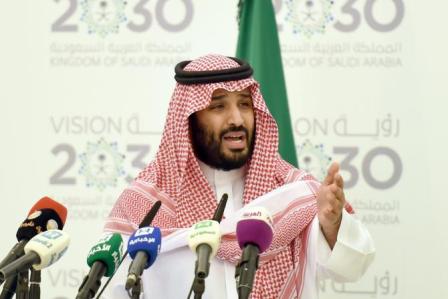
Signs of social revolt increased inside the Kingdom, and they had to “take the heat” along the external perimeter of Al-Saud dynasty and from quite unexpected directions. The U.S. Congress passed the Justice Against Terrorism Sponsors Act (1) triggering an extremely negative response in Riyadh, the more so as Tehran started receiving signals for restoration of relations from Washington.
Iran’s successful year
In January, some one-sided and international sanctions that were the most painful for Iran’s economy were lifted. Iran’s banks reconnected to SWIFT network, the country saw an end to the EU embargo on import of oil from Iran and even started making high cost contracts with U.S. and EU. Meantime, along with contracts with such corporations as Total, Airbus, Shell, Boeing and others, Iranians did not avoid “unpleasant surprises” from Western powers. The U.S. Congress extended the sanctions introduced against Iran in 1996 for another decade.
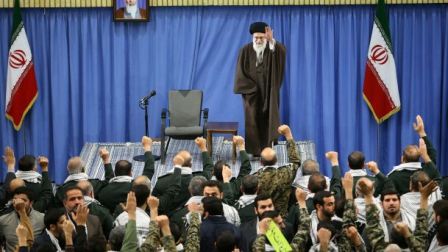
Iran and Saudi Arabia have additional reasons to fear U-turns in the Middle East policy of U.S. after Donald Trump was elected president. The new U.S. leader has already said that Saudi Arabia “have nothing, but money” and it will be demanded the most active financial participation in all political projects of U.S. in the region. As for Iran, Trump called the nuclear deal (The Joint Comprehensive Plan of Action (JCPOA) reached in Vienna on 14 July 2015) “the stupidest of all time” and warned that the Congress will revise it.
Nevertheless, the year 2016 was successful for Iran unlike Saudi Arabia. The Shia super power made its enemies to reckon with it in Syria, Iraq, Yemen, Afghanistan. As for the relations with traditional and potential partners, there are many breakthroughs here. For instance, the largest Arab country has graphically showed limits of too close rapprochement with Iran’s geopolitical rivals.
Egypt’s disappointment
Egypt started the year 2016 in anticipation of bigger “bonuses” from close cooperation with the Gulf monarchies. However, it has quite different results, as the year is ending. Exchange of high-level visits with Saudi Arabia that resulted in many-billion credit agreements and oil contracts proved really disappointing for Egypt. Cairo transferred two Red Sea islands to Riyadh and faced civil protests that were due to grow into a new Egyptian revolution. Egypt and Saudi Arabia made a 23-billion-worth contract for supply of oil and oil products, but it proved to be another blow upon Egypt’ sovereignty. Saudis demands Egypt to join “the all-Arabian initiatives” over Syria. Cairo refused and voted for the Russian draft resolution on Syria at the UN Security Council in early October.
Now, it is time for Saudis to take measures to influence the “willful” North-African partner. At first, it halted and then “froze” the supply of oil and oil products from Saudi Arabia to Egypt. The latter had to search for new suppliers of fuel taking a fresh look at Iran.
Egypt remained committed to its multi-vector foreign policy relying on tested partners, including Moscow, though Russia and Egypt still have untapped military-political and economic capacities. Egypt held unprecedented drills “Defenders of Friendship 2016” with Russia in October, made a milestone agreement on construction to four nuclear power units with a total capacity of 4,800MW. However, what was to be implemented this year has been rescheduled for 2017. The final contract for construction of the first Egyptian NPP by Rosatom has not been sighed yet. The air communication terminated in the autumn of 2015 has not been resumed either. Considering Moscow’s cautiousness when it comes to air communication with Egypt, the latter does not harry to launch a closer format of political and military relations with Russia. To recall, Egypt’s leadership disassociated itself from possible provision of a territory for counter-terrorist attacks of Russia’s Aerospace Force.
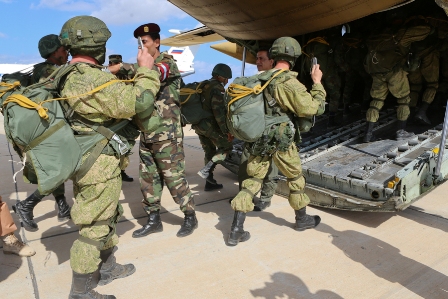
Turkey’s failure
The year was uneasy for Turkey too. It suffered huge casualties in the domestic conflict with Kurds in the southeast of the country, from a series of big terror attacks in Turkey’s cities and the coup attempt in mid-July 2016. Reportedly the victims among civilians, security forces and the military numbered hundreds and even thousands, according to some reports.
The Turkish Army operation in the southeast province densely populated by Kurds was generally over by the spring. Kurdish rebels have not been suppressed finally. The authorities not only resorted to frontal attack against the Kurdistan Workers’ Party (PKK) that is banned in the country, but also launched repressions against legal pro-Kurdish political forces. The leadership of the parliamentary Peoples’ Democratic Party was arrested this November. In response, radical Kurdish forces shifted the guerilla war from rural areas to Istanbul and Ankara.
In 2016, Daesh claimed responsibility for another big terror attack, this time in Gaziantep. Turkish army opened another front in the north of Aleppo province, in Syria. Turkey’s Armed Forces General Staff in cooperation with the so-called Free Syrian Army started Operation Euphrates Shield there on August 24. One of the major goals of Turkey’s intervention has not been achieved, as Daesh’s stronghold of al-Bab in the north of Syria has not been destroyed. Judging by the reports of Turkish generals, about 2,000km of the “caliphate” has been regained and about 5,000 Jihadists have been destroyed, with the largest populated area to be liberated soon.
Simultaneously with Daesh’s destruction in the north of Aleppo, Turkish military sought to weaken the Syrian Kurds not to let the territory under their control in the southern underbelly of Turkey to expand.

The key event of the year for the only NATO country in the Middle East was the coup attempt of July 16. The coup attempt spawned many conspiracy theories, including that the authorities imitated the putsch for their domestic and foreign policy goals. One thing is for sure though: Turkey is being lured into the Middle East destabilization. The country’s economic situation gives more and more reasons to doubt that it is protected against new domestic tensions. The polity, which the Turkish authorities are trying to shift from parliamentary to presidential one, may give under large-scale reformation.
Turkey timely stepped back from the dangerous line of confrontation with Russia after shooting down a Russian warplane over Syria on November 24 2015. The two countries have resumed their usual efforts to soften the foreign policy discrepancies through implementing big joint economic projects. Turkish Stream has been reanimated and Russian tourists return to Turkish resorts. However, no breakthrough has been made on another significant economic project, the construction of Akkuyu, the first NPP in Turkey, by Rosatom (2).
Russia and Turkey remain in different “weight categories” on the international arena and even in the Middle East, though Ankara would like to be on equal terms with Moscow. The recent assassination of the Russian ambassador in Ankara showed that the two countries still have problems and challenges in their relations.
Israel’s choice in favor of coordinated efforts with Russia
Israel avoided the Middle East turbulence this year. The borders of the Jewish state resisted all the potential external threats: Sinai Jihadists, HAMAS militants, Lebanese Hezbollah, terror groups in Syria. The Israeli military command and political leadership managed to do this due to close coordination of actions, “synchronization of watches” with Russia throughout the year.
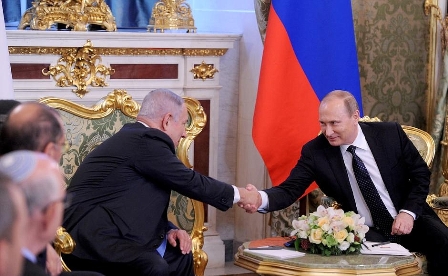
Israel’s air forces targeted the arms convoys running from Damascus to Beirut any time Tel Aviv suspected that the recipient is Hezbollah. Israel had vain concerns that the situation on its northern borders may destabilize as the 10th anniversary of the Second Lebanese War (Jul-Aug 2016) was approaching. Israel still feels existential threat from Iran and the militant groups in the region, though Iran’s nuclear program is under strict international control. This required non-standard decisions, such as opening of confidential channels of communication with Saudi colleagues on the common anti-Iranian platform.
Launching an active diplomacy, both public and secret, at once in different directions, Tel Aviv may confidently look ahead to the year 2017. The results of the presidential election in the United States inspire it with additional optimism. The principle “two states for two peoples” in the Palestinian-Israeli settlement, which the previous U.S. Administration had been uselessly demanding from its ally in the Middle East for the last 8 years, can be shelved now. Donald Trump promised Israel to move the U.S. Embassy to Jerusalem, which will mean recognition of the everlasting city as capital of Israel. Nevertheless, Israel is not losing its head from such “gifts.” The best evidence of this is the intensive communication with Russia on the acutest issues in the region.
”Caliphate” withstood
Iraq and Syria remain in the epicenter of terrorist activity of Daesh and other Jihadist organizations. The borders of the “caliphate” in the two Arab countries have been reduced dramatically over the year, but it is still capable of launching offensives and efficiently repelling on all parts of the front. In 2016, the key bane of the Middle East has pursued access to new resources, human (“Jihadist infantry”) and material ones, rather than seizing new territories.
Victory in Mosul put on hold
Operation to liberate Mosul that started in mid-October has not been finished by the end of the year, despite the six-month-long preparations for offensive on the Iraqi megacity that was seized yet in June 2014 and the 100,000 troops deployed to that end. Under Mosul, the government troops are suffering serious losses, as the special forces and 101st Airborne Division of the United States that were deployed in Iraq do not harry to join them.
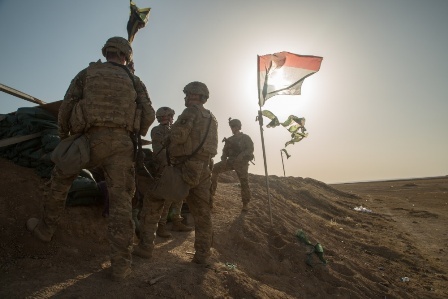
The domestic political situation in Iraq directly depended on achieving immediate and solid victories over Daesh. Haider al-Abadi’s government had to neutralize not only terror risks, but also the growing activity of political rivals. Protracted fight for Mosul is fraught with negative consequences for the incumbent authorities of Iraq.
Turning point in Syria
The civil war in Syria is five years on. Bashar al-Assad’s government is still efficient and the Syrian army is still capable, and this was not without the help of Russia and Iran.
The first largest victory over Daesh during the last 5 years was in March near Palmyra. However, scarcely had Russian forces shifted to the operation in Aleppo, the ancient city was lost to terrorist by the Syrian army and the national defense forces. Furthermore, those days Jihadists not only gained stronghold in Tadmor (Palmyra), they are threating to seize even Homs that lies 150km to the west of Palmyra.
But for the destruction of Islamic-militants in the east of Aleppo, Damascus would have to sum up the year with negative military results. With the support of Moscow and Tehran, Assad’s troops achieved in the east of Aleppo what Baghdad still fails to achieve in Mosul and Ankara – in Syria’s al-Bab.
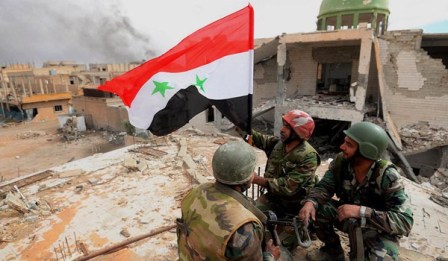
Actually, the turning point in the war against “international extremisms” in Syria will be postponed for the next year. It is reported that the government troops have concentrated on the area of East Ghouta, a suburb in Damascus, to launch large-scale offensive against militants of Jaysh al-Islam, the largest group in the south of the frontline. There are first signs that the “moderate militants” evacuated from Aleppo to the neighboring province Idlib will not get permanent shelter there. Tasting the victory in Aleppo, the government troops will not endure the Turkey-fed “breeding ground” for terrorists of Jabhat Fateh al-Sham (Syrian al-Qaeda, Jabhat al-Nusra renamed in 2016), Ahrar al-Sham and other groups in Idlib.
It is early to speak of irreversible transfer of the strategic military initiative to the Syrian army. Meantime, on the diplomatic front of combined efforts of Russia and Iran, such transition has happened actually. Through bilateral cooperation with U.S. Russia failed to achieve basic elements of settlement in Syria: ceasefire throughout the territory and dissociation of the responsible opposition groups and Jihadi factions. The agreement Moscow and Washington reached in Geneva on September 9 remained on paper. Big hopes are pined with the peacemaking capacities of the Russia-Iran-Turkey triangle. Meanwhile, it is doubtful if it will be possible to achieve in the entire country what the given three countries achieved in Aleppo. Leaving U.S. beyond the external efforts in the Syria settlement was a cherished geopolitical prize for Moscow and Tehran. However, it is highly questionable if Turkey will remain a committed partner of Russia and Iran in that “project.”
Russia making long-range attacks
Despite all questions that are still open, Russia’s capacity to influence the processes in the Middle East in 2016 is undisputable. Russia’s military presence in Syria is termless. The airbase in Hmeimin and the logistic center in Tartus are shifting to permanent operating conditions. Since the beginning of the military operation of Russia Aerospace Force in Syria (Sept 30, 2015), a huge work has been carried out to fight international terrorism through long-range attacks (3).
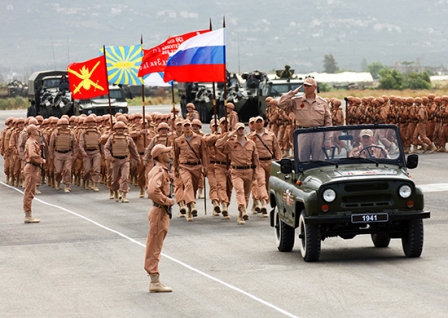
Russia’s year in the Middle East was more than productive, including from the viewpoint of its authority and active involvement in regional processes. Russia and Iran holding tight the initiative in the fight against terrorism in the Middle East. Meantime, the biggest mistake after successful fight for “Syrian Stalingrad” (Aleppo) would be falling into euphoria. Along with others, U.S. and some Middle East forces still have solid levers to torpedo the combined efforts of Moscow and Tehran, especially if they continue actively inviting Ankara to their “anti-Jihadi club.”
Russia has carried out a huge and hard work in the Middle East over the year. However, the situation requires additional resources and more focus on the Greater Middle East. Russia has returned to the region making everyone to respect it.
(1) On September 28, for the first time in eight years of Obama’s presidency, both the chambers of the U.S. Congress cancelled the veto on the bill allowing the families of victims of the 11 September terror attacks to sue Saudi Arabia's government for damages. On September 30, a woman widowed when her husband was killed at the Pentagon on Sept. 11, 2001 sued the Kingdom of Saudi Arabia just two days after Congress enacted legislation allowing Americans to sue foreign governments for playing a role in terrorist attacks in U.S.
(2) Rosatom expects progress on Akkuyu Nuclear Project in 2018 after it obtains a construction license and plans to launch construction in the same year. It is anticipated that the first of the planned four power units will be put into service in April 2023.
By data of the Russian Defense Ministry for December, 12,360km of Syrian territory and almost 500 populated areas have been liberated from the militants. Since the beginning of the operation, the Russian air force made 18,800 flights, making 71,000 strikes on the infrastructure of terrorists. 35,000 militants, including 204 field commanders, 1,500 pieces of military equipment were destroyed. 725 training camps, 405 ammunition producing factories and shops were liquidated.
EADaily’s Middle East Bureau
 "The White House is bursting" — what stopped the strikes on Iran
"The White House is bursting" — what stopped the strikes on Iran German car manufacturers were forced to turn off the heating of windows and seats
German car manufacturers were forced to turn off the heating of windows and seats The experience of the USSR was enough: why did Russia change the strategy of supporting other countries?
The experience of the USSR was enough: why did Russia change the strategy of supporting other countries? "Arbeiten, idlers" — German Chancellor demands Germans to work more
"Arbeiten, idlers" — German Chancellor demands Germans to work more A traitor, a junior sergeant of the Russian Armed Forces, was sentenced for treason
A traitor, a junior sergeant of the Russian Armed Forces, was sentenced for treason Either Ukraine will disappear, or Putin will appoint the President of Ukraine — Panchenko
Either Ukraine will disappear, or Putin will appoint the President of Ukraine — Panchenko